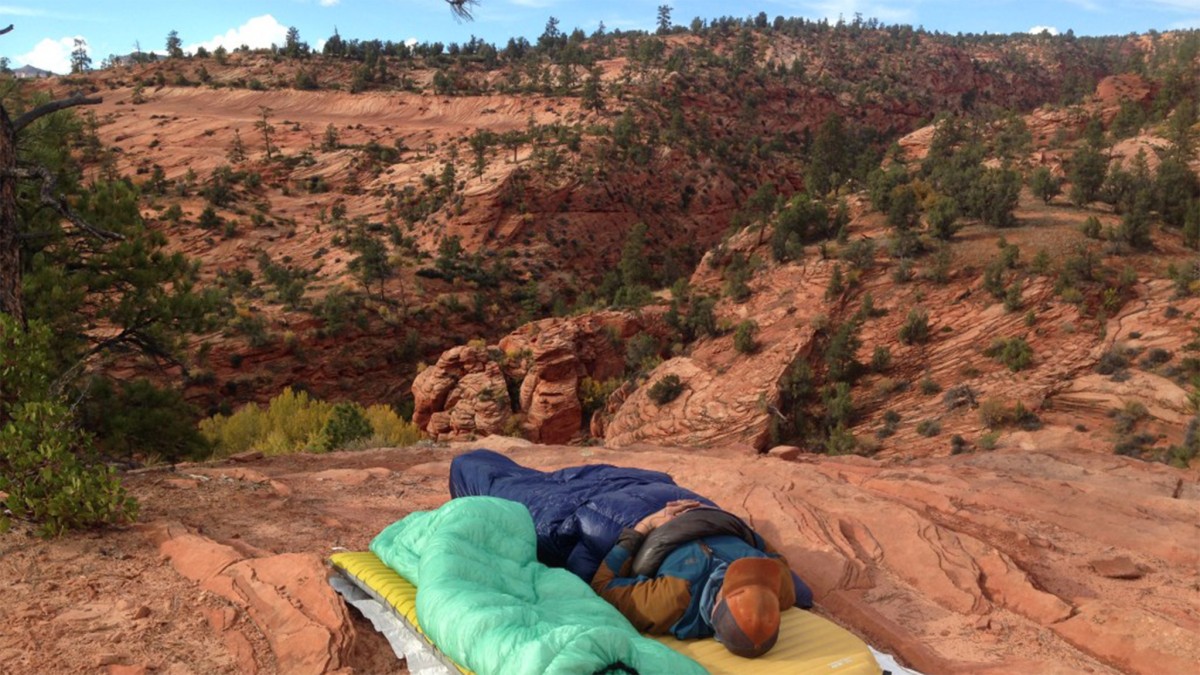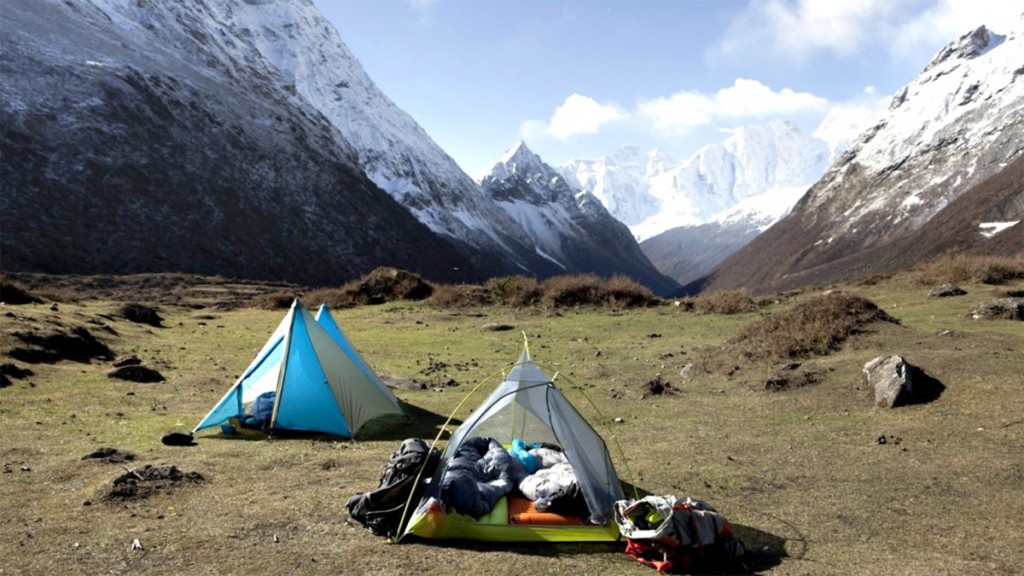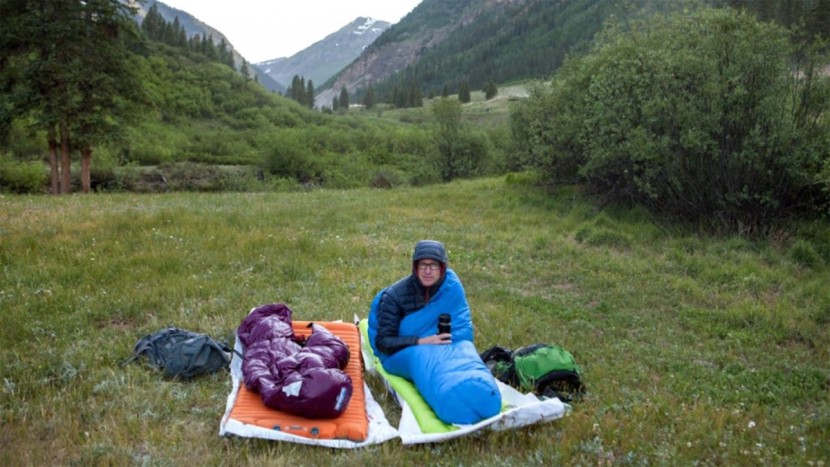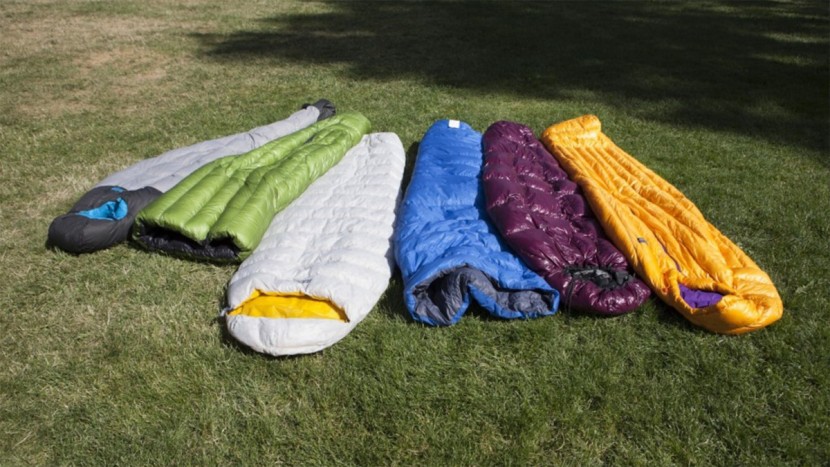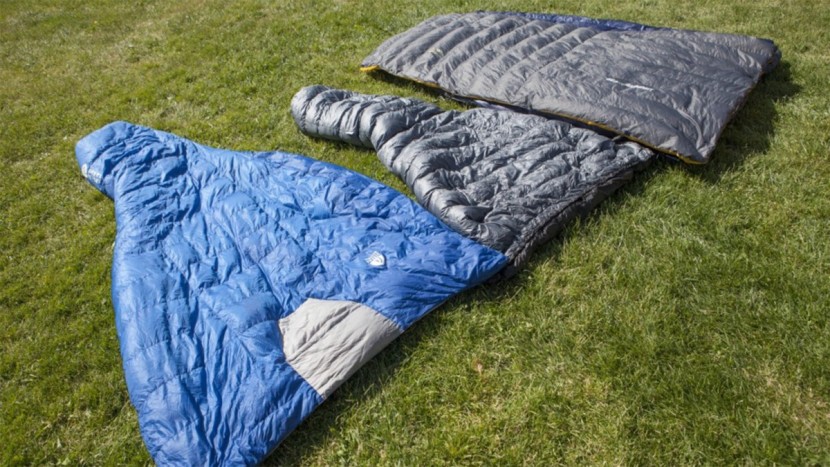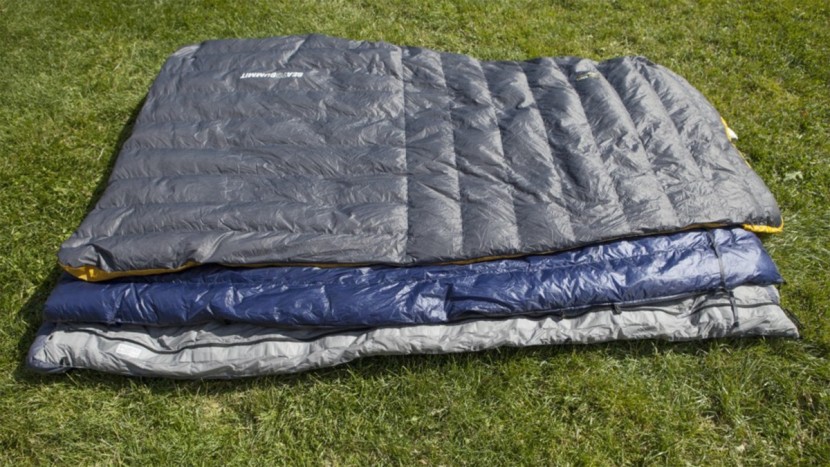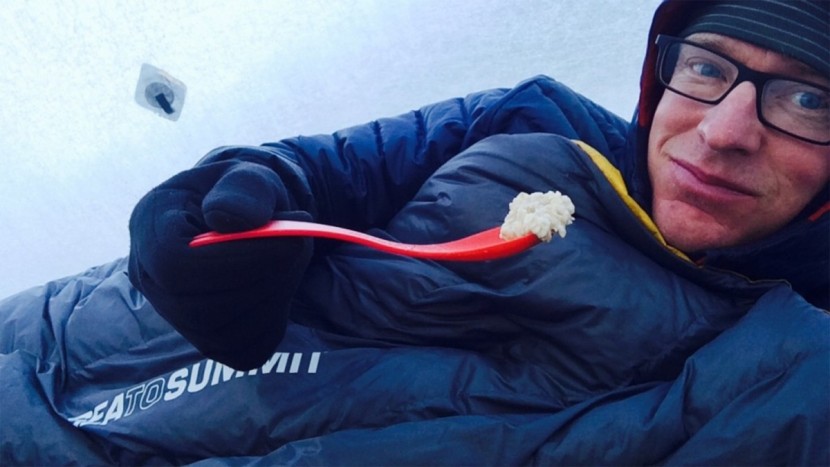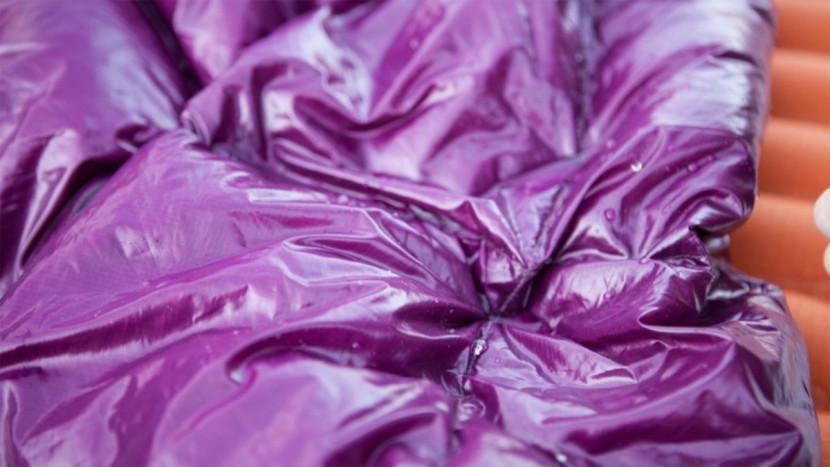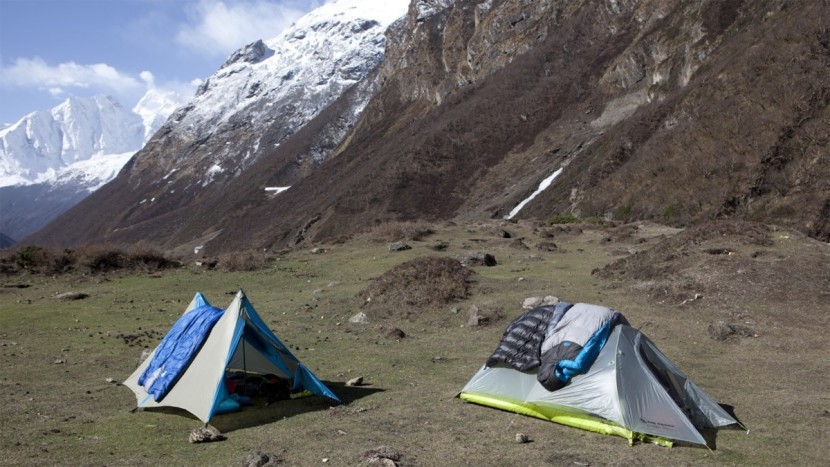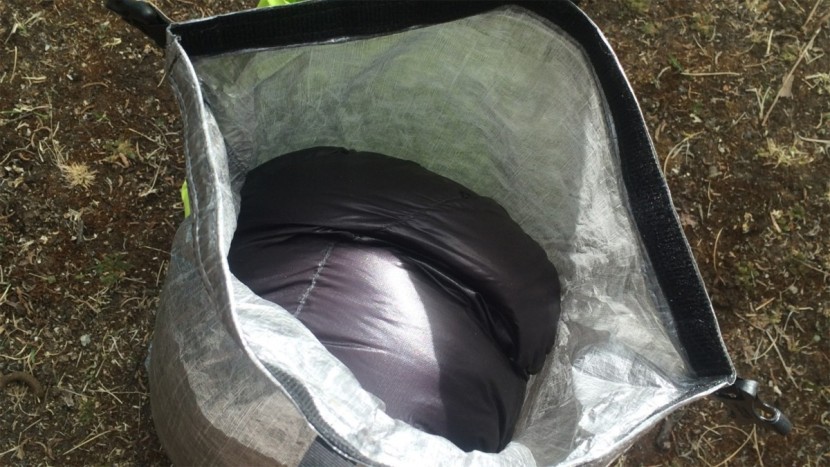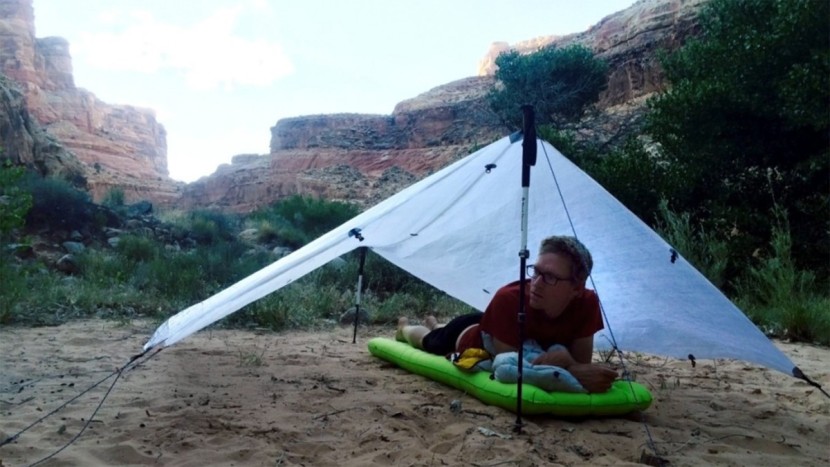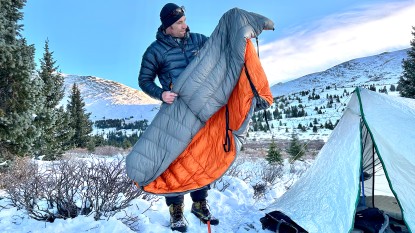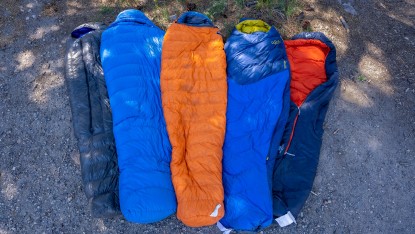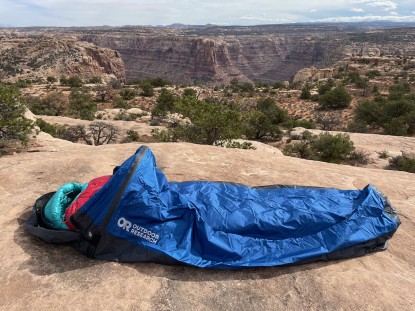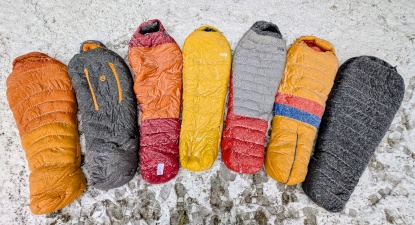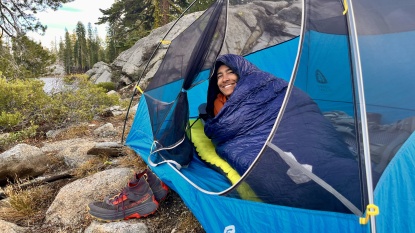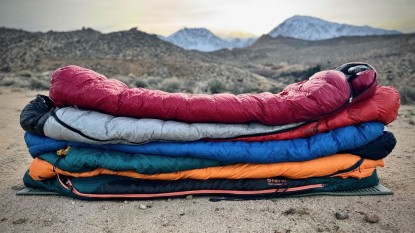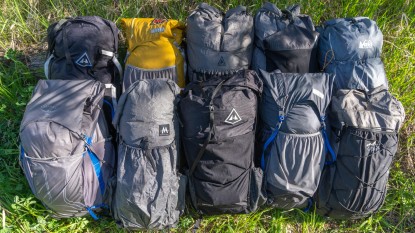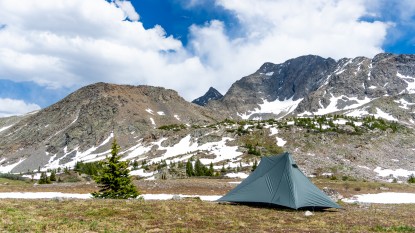How do you choose the right ultralight sleeping bag for your needs? Are you better off with a closed footbox quilt or a hoodless mummy? Would a traditional backpacking sleeping bag better meet your needs? After 13 years of testing and comparing the best featherlight products in our Best Ultralight Sleeping Bags Review, we have some advice to make your decision easier.
First, if you're unsure about whether an ultralight product is right for you, our Buying Advice article for traditional backpacking sleeping bags provides a detailed analysis of the categories we test and score. This comprehensive overview covers various types of insulation, shell fabrics, and construction techniques, as well as different styles of bags and their optimal uses. To avoid redundancy, the article below focuses on styles, features, and strategies that are particular to ultralight sleeping bags, and doesn't repeat the broad information relevant to all sleeping bags.
Choosing the Right Sleeping Bag
This article aims to guide you through a decision-making process that will help you choose the perfect sleeping bag for your needs. This involves asking yourself a series of questions that will help you identify your needs and desires, and also rule out any particular bags or styles that are inappropriate for your adventures. The result should be a very narrow focus of products that you can then research in more depth before making your decision.
Why Choose An Ultralight Sleeping Bag?
A few decades ago, it was very common to head out on week-long trips with a frame backpack full of 50 or more pounds of gear and wear a big, old pair of 5-6 inch hiking boots. Today, not only is there much more advanced gear thanks to improving technology and materials science, but many backpackers and climbers also recognize how much easier it is on their bodies to carry a light load. Anyone who has ever been backpacking can tell you a story about the relief they felt when they took off their enormous pack, and the dread that came each morning when it had to be donned once again. Simply put, traveling light is much less arduous and, therefore, much more enjoyable. Besides, if you want to cover a lot of mileage each day or you're carrying your overnight kit up a technical climb, there is no arguing that light is right.
While ultralight sleeping bags are ideal for backpacking, they are also great for many outdoor sports that require a “light is right” approach. In particular, over the last few years, ultra-endurance activities have experienced a surge in popularity. Long-distance thru-hiking, bike-packing, fast-packing, and bike touring have become somewhat commonplace, and ultralight sleeping bags are one of the pieces of lightweight kit needed to make these adventures happen.
How Can a One-Pound Sleeping Bag Be So Warm?
On average, the ultralight sleeping bags and quilts we review weigh half as much as backpacking sleeping bags, but usually deliver similar warmth. How is that possible? Most of the bags we tested use the most advanced lightweight materials and the highest quality insulation. However, the materials are only one key part; how the sleeping bag is used is equally important.
Most thru-hikers and alpinists sleep in most or all of their warm clothing on cold nights. Not only are they dressed and ready to go for a pre-dawn start, but they can also get away with a lighter sleeping bag. Ultralight enthusiasts also know how to pick campsites with a warm microclimate or protection from the wind. Ever set up camp in the bottom of a valley, only to walk a few hundred feet up the hillside at dawn and realize it's a good 10 degrees warmer up there? Choices like this one can make a significant difference in whether you stay warm enough to sleep through the night. Hot drinks before bed and at dawn, a Nalgene full of boiling water to preheat your bag, a set of crunches to ramp up the blood flow to the extremities — these are all tricks we use for a comfy and warm night's sleep.
Types of Ultralight Sleeping Bags: Mummy Bags and Quilts
Ultralight sleeping bags generally fit into two different categories based on their design: Mummy Bags or Quilts. However, there are many variations of these two simple designs, and hybrids also exist.
Mummy BagsMummy bags are the most common style of three-season sleeping bag. They are designed to enclose you completely like a mummy and are shaped just like the Pharaohs you can see at the museum. They are narrow at the feet and legs and wider through the torso. Most mummy bags have a large hood that fully covers your head and can be cinched tight around your face, allowing only the tiniest opening to breathe through, thereby providing the very best protection against the cold. Mummy bags help you stay warm by only leaving a small amount of space inside the bag that is unfilled by your body, meaning less air to heat. This also makes them feel constricted and claustrophobic to some. Compared to quilts, these bags tend to be the easiest to use, as the design is familiar to most and less complicated.
Quilts
Down quilts are a versatile solution to the feeling of constriction that is inherent in a mummy bag design. They also manage to save weight by excluding unnecessary material and insulation, as well as eliminating the hood and zipper. The basic premise is that to be an effective insulator, down needs to be able to loft up and create space that traps air. When you sleep on top of down, it is fully compressed, thereby losing the vast majority of its insulating properties. Rather than carrying the extra weight and bulk of that “wasted” down insulation and fabric that encloses it, why not simply forego having an underside to the sleeping bag altogether?
Interestingly, despite the logic of this argument, ultralight quilts in this review were not statistically lighter than their mummy counterparts (they are still much lighter than traditional, non-ultralight mummies). However, they do allow for a great range of comfortable sleeping styles, enabling one to either wrap oneself up in the cold or spread out and ventilate in the heat.
An interesting feature commonly found on most quilts, but not on mummy bags, is a sleeping pad attachment system. To stay comfortably wrapped around you so that warm air does not escape and cold air does not infiltrate your comfort envelope, manufacturers have devised different systems of straps that wrap underneath a sleeping pad and attach to the sides of the quilt, holding it in place. In our experience, the functionality of these attachment systems ranges from “awesome” to “useless.” Check out our individual reviews to see which ones work best for you. The quilts we tested came in two basic designs: foot box enclosed or full blanket.
Safety & Warmth
Your sleeping system, along with your shelter to keep it dry, is your primary safety net while deep in the backcountry. On your quest to lighten your load, this should always be in the back of your mind. Actually, it should be stated upfront. Our testers, who have thru-hiked big trails, want us to emphasize this point: it can take A LOT of experience to use a 10-pound backpacking kit in threatening conditions.
When the weather takes an unexpected turn for the worse, you have two options: hunker down and wait it out or stay on the move for what could be hours or even days. To stay safe with your ultralight kit, you must know how to use your shelter plus sleep system to make it through a long, unexpected storm. Two days and nights of cold rain (or even snow) are always a possibility, even in the summer, in most mountains. And we often hear folks say, “If my bag gets wet or I can't pitch my tarp, I'll just keep hiking to stay warm until the weather clears.” But can you do this in the dark? Or in weather that makes it hard to see and navigate? Ensure your skills and systems will see you through hunkering down to weather out storms. Practice a lot. Spend nights out in terrible weather close to your home or vehicle to prepare.
Temperature Ratings
If you have doubts about what warmth rating is appropriate for you, choose a product that is warmer than you think you will need. As we discussed in the 'Warmth' section of our main Best In Class review, be aware that temperature ratings listed by manufacturers may not be accurate. However, they should give you a general ballpark figure for the coldest nights you would want to sleep in that bag. If you are a cold sleeper or have doubts about facing colder temperatures, we recommend carrying a few extra ounces and having a slightly warmer sleeping bag. Almost every bag tested in this review comes with different temperature options (although they may not always be referred to by the exact same name). If you know you will be heading into the high mountains and like the features of a bag rated to a lower temperature than is appropriate, be sure to take a close look at the product line, as many manufacturers make several versions rated to different temperatures.
Also, keep in mind the limitations of your preferred sleeping bag style. For example, quilts that attach to sleeping pads rely on the insulating properties of the pad to complete the comfort envelope. This means that on a cold night, you could have a 30-degree bag that is more than sufficient, but a minimally insulated air mattress beneath you that allows cold air to conduct into your body, meaning you may still feel cold. An extra layer of protection, like a lightweight bivy sack or a fully enclosed tent, can help you in these situations, and also give you a larger margin of safety if bad weather strikes.
Down & Moisture
We purposely selected mostly down-insulated products for this review. Down has a significantly better warmth-to-weight ratio than synthetic insulation, but has one main drawback. It must be kept dry to maintain its loft and keep you warm. We can't emphasize this enough: keeping your sleeping bag dry and taking every opportunity to air it out in the sun is critical to your warmth and safety. If you exclusively backpack in very rainy environments, consider paying the weight penalty and using a synthetic insulated bag or quilt. Increasingly, ultralight manufacturers are producing quite light synthetic insulated bags and quilts.
Hydrophobic DownIncreasingly, manufacturers are incorporating hydrophobic down into their products, which means the down is treated with a DWR (durable water repellent) coating for added water resistance. There are a lot of claims about the efficacy of this treatment, and we recommend you check out the findings of our tester Ian Nicholson in his Buying Advice article for Backpacking Sleeping Bags. The summary is that while purchasing a bag with hydrophobic or treated down can't hurt, we don't recommend relying on it to save you in a downpour.
Another nice feature to look for is a DWR coating on the shell fabric of the sleeping bag or bags, or a shell fabric that is inherently water-resistant, such as Pertex Quantum. While these coatings should not be relied upon to keep a bag dry when it is wet outside, they can help prevent water absorption due to condensation inside a tent, especially around the foot of the bag. It is also possible to apply your own aftermarket DWR coating when washing your down bag (see the care instructions at the end of this article for guidance on doing so).
Sleeping bag liners can help extend the lower limits of your ultralight sleep system and extend the life and effectiveness of your sleeping bag. Liners trap additional layers of air to keep you insulated. They also absorb body oils and moisture, which can reduce the effectiveness of the down fill, thereby increasing the lifespan of your sleeping bag. We recommend them especially on longer trips, where conditions can be more variable, or where washing gear is an option; washing and drying a liner is always easier than washing a sleeping bag.
Stuff Sacks: We highly recommend purchasing an aftermarket waterproof stuff sack for your bag. Additionally, many backpackers will line their entire pack with a waterproof liner, allowing them to use a regular compression sack for their bag. A heavy-duty garbage bag, or better yet, a trash compactor bag, works great. If you'll be out for weeks or months, consider purchasing a durable and waterproof Cuben fiber pack liner.
For sizing compression or waterproof stuff sacks, there are a couple of tips to help you find the right size. The best option is to take your bag into a store and try on different sizes (most retail stores allow this). Another option, especially if the company you're buying your bag from also sells compression sacks, is to check the sizing tag inside the regular stuff sack that comes with the bag; many companies sell corresponding-sized compression sacks separately. Lastly, the “tech specs” section of sleeping bag websites typically lists the packed size of their bags, which can help you find the right compression or dry sack for your bag. If all else fails, we've had success calling or emailing the manufacturer to ask for their recommended size.
Lastly, if you're between a stuff sack or a compression sack, we vote compression! They save pack space, which is (objectively?) a very good thing.
Your Ultralight Sleeping Bag as Part of a System
When building your kit for ultralight backpacking, your focus will be on selecting complementary products and systems that lead to an overall light base weight.
Your “Big Four” items when building your kit include a sleeping bag and sleeping pad, along with your backpack and shelter. These are usually the heaviest four items a three-season backpacker carries, and the most important for nighttime weather protection, warmth, and safety.
Care & Feeding of Down Sleeping Bags
As we have discussed above, taking every opportunity to make sure your ultralight sleeping bag stays as dry as possible is critical to maintaining loft and warmth on multi-day trips. Long-term care ensures the best possible lifespan and optimal performance. After long trips (or at least once a year), you should launder your bag; otherwise, the oil from your body can build up and coat the down feathers, reducing the loft and elasticity of the down. You can do it yourself relatively easily (we usually do), but several manufacturers offer professional cleaning services as well.
To get started, find a large, front-loading commercial washing machine. Most laundromats will have them. A top-loading washer with an agitator can damage down garments — don't do it. You'll also want to pack a down-specific soap, such as Nikwax Down Wash, to take with you. Spot clean any really dirty areas of the shell material first with a cotton cloth, and then turn your bag inside out. Use your down soap on the normal cycle with cold water for all cycles. Select a second rinse if available, or run another full cycle after the first without soap. Now you have a clean but wet bag. Drying is the most time-consuming step.
Move your wet bag to one of the big front-loading commercial dryers. Ideally, you will have used it immediately before for some other laundry to verify that the medium or medium-low setting is indeed accurate. Your completely wet down bag will be very clumpy, so here's where a trick comes in handy. We either throw a few tennis balls in with the bag (or a very clean pair of running shoes). While the bag tumbles and tumbles on medium heat, these items will help break up the wet clumps of down. You can also stop the dryer periodically and break up clumps by hand. And that's it. Just make sure you've identified a dryer that will not get too hot and damage the synthetic fabric of your bag.
After your bag is dry, it's the perfect time to reapply a spray-on DWR treatment to your bag. We thoroughly clean the foot area of the bag after washing. Ensure your bag is completely dry before storage. We tend to do this operation on a sunny day, when we can lay the bag out in the sun for the DWR to dry for a couple of hours, and then stick it back in the dryer one last time to ensure it's completely dry.
Also, ensure that you always store your bag uncompressed, in a dry location, and out of direct sunlight. Long-term compression breaks down the small fibers of the down feathers, and reduces the loft they will bounce back to. Every product in this review comes with a large storage bag, typically made of mesh, cotton, or another breathable fabric. This will make sure that your sleeping bag stays fluffy and warm for your next trip. With care, a down sleeping bag can last ten years or more of quality use without significant loss in performance.

